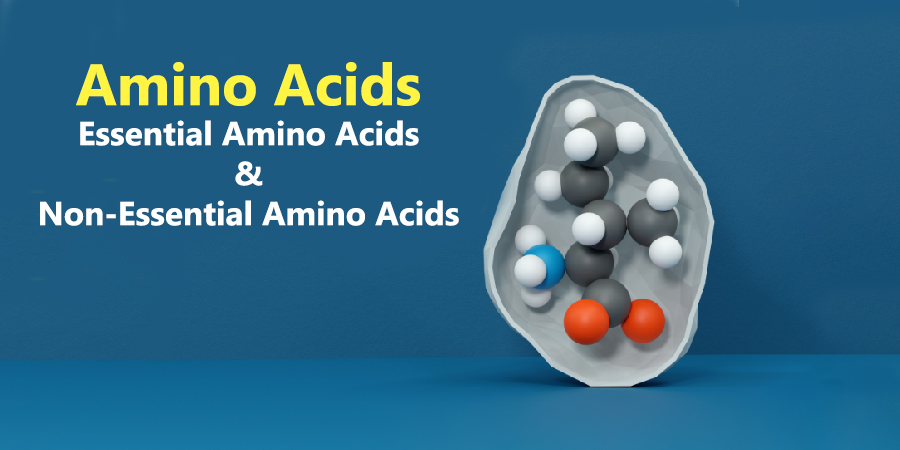Amino acids are essential for life. They serve as the building blocks of proteins, which are involved in almost every function within the body. Proteins make up muscles, enzymes, hormones, and antibodies, all of which are critical for survival. But how many amino acids are there, and what roles do they play? The answer is simple yet fascinating: there are 20 standard amino acids that make up proteins in the human body, and each has unique properties and roles. In this article, we’ll explore how many amino acids are there, classify them, and understand their impact on health and well-being.

What Are Amino Acids?
Amino acids are organic compounds made up of carbon, hydrogen, oxygen, and nitrogen. Some also contain sulfur. Their structure includes an amino group (–NH₂), a carboxyl group (–COOH), and a unique side chain that gives each amino acid its distinctive characteristics. Amino acids are the building blocks of proteins and play a crucial role in the body’s functions. They combine in various sequences to form proteins, which then fold into specific shapes and carry out various tasks in cells.
How Many Amino Acids Are There?
There are 20 standard amino acids that are genetically encoded in the DNA of all organisms. These are often referred to as “proteinogenic” amino acids, meaning they form proteins. While some organisms have additional non-proteinogenic amino acids that are not coded in their DNA, the standard 20 are essential to human life and are found in all life forms.
The Two Categories of Amino Acids
Amino acids can be classified into two main categories:
- Essential Amino Acids: These are amino acids that the body cannot produce on its own. They must come from the diet.
- Non-Essential Amino Acids: These are amino acids that the body can produce, even if they are not readily available from food.
The Nine Essential Amino Acids
The body requires nine essential amino acids from food sources, as it cannot synthesize them. Each has specific functions:
- Histidine: Essential for growth, tissue repair, and red blood cell formation. It also plays a role in maintaining the myelin sheath, which protects nerve cells.
- Isoleucine: Important for muscle metabolism, energy production, and immune function. Found mainly in muscle tissue.
- Leucine: Known for stimulating muscle protein synthesis, leucine is critical for muscle growth and tissue repair.
- Lysine: Plays a key role in protein synthesis, hormone production, and calcium absorption.
- Methionine: Important for tissue growth and the absorption of essential minerals like zinc and selenium.
- Phenylalanine: Serves as a precursor for neurotransmitters like dopamine and norepinephrine, which are involved in mood regulation.
- Threonine: Contributes to collagen and elastin formation and plays a role in immune function.
- Tryptophan: Precursor for serotonin, a neurotransmitter that influences mood, sleep, and appetite.
- Valine: Known for stimulating muscle growth and tissue repair, valine also provides energy during exercise.
These essential amino acids are available through protein-rich foods such as meat, fish, eggs, dairy, soy, and certain legumes.
The Eleven Non-Essential Amino Acids
The body can produce these amino acids, so they don’t have to come from the diet. However, they are still crucial for various bodily functions:
- Alanine: Helps convert glucose into energy and is essential for maintaining blood sugar levels.
- Arginine: Plays a role in wound healing, immune function, and the production of nitric oxide, which helps relax blood vessels.
- Asparagine: Crucial for brain development and function. It also aids in the synthesis of other amino acids.
- Aspartic Acid: Helps convert food into energy and is involved in the urea cycle, which removes excess ammonia from the body.
- Cysteine: Contributes to the production of antioxidants and is important for the health of skin, hair, and nails.
- Glutamic Acid: Serves as a neurotransmitter and plays a role in cognitive functions like memory and learning.
- Glutamine: Supports immune function and gut health and is involved in the production of proteins and glucose.
- Glycine: Necessary for collagen production, glycine also has calming effects on the brain.
- Proline: Important for collagen production, which supports skin, joints, and blood vessels.
- Serine: Involved in the metabolism of fats and immune function. It also supports muscle growth.
- Tyrosine: Precursor for hormones like dopamine and adrenaline, which regulate mood, stress, and energy levels.
Conditional Amino Acids
Some amino acids, although classified as non-essential, become essential under certain conditions, such as illness or stress. These are call conditional amino acids and include:
- Arginine
- Cysteine
- Glutamine
- Tyrosine
- Glycine
- Proline
- Serine
For instance, while glutamine is usually non-essential, the body may need extra amounts during periods of intense stress, trauma, or illness.
The Role of Amino Acids in the Body
Amino acids support almost every biological process. Here are some key roles:
- Protein Synthesis: Amino acids link together in chains to form proteins, which then fold into specific shapes to perform functions.
- Energy Production: When necessary, amino acids can be useful for energy, especially during times of starvation or heavy exercise.
- Hormone Production: Some amino acids serve as precursors for hormones that regulate mood, appetite, and other bodily functions.
- Immune Support: Amino acids like glutamine and arginine support immune cell function and wound healing.
- Brain Function: Amino acids such as tryptophan and tyrosine are precursors for neurotransmitters, influencing mood and cognitive function.
Food Sources of Amino Acids
To meet the body’s amino acid needs, it’s essential to consume a balanced diet with enough protein. Animal-based foods, such as meat, fish, eggs, and dairy, provide all essential amino acids. Plant-based sources, like beans, lentils, tofu, and quinoa, also contain essential amino acids. However, some plant proteins lack one or more essential amino acids, so vegetarians and vegans should combine protein sources (like rice and beans) to ensure they get all essential amino acids.
Why Amino Acids Matter for Health
Amino acids are vital for maintaining muscle mass, supporting immune health, and ensuring proper brain function. Deficiencies in essential amino acids can lead to symptoms like muscle wasting, poor immune function, and mood disorders. Athletes and people with high protein needs (such as those recovering from illness) may benefit from consuming higher levels of certain amino acids to promote recovery and performance.
Conclusion of How many amino acids are there
Amino acids are the foundation of proteins and play crucial roles in almost every bodily function. With 20 standard amino acids, including nine essential and eleven non-essential ones, they support everything from muscle growth to immune health. By understanding how each amino acid contributes to our bodies and choosing protein-rich foods, we can support overall health and optimize bodily functions. Whether through diet or supplementation, ensuring you get the right balance of amino acids is essential for wellness and vitality.









